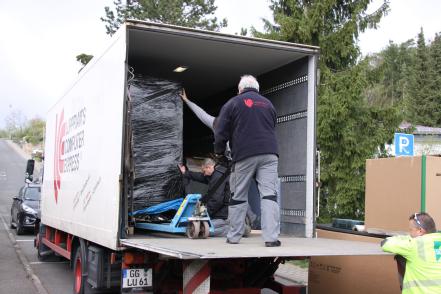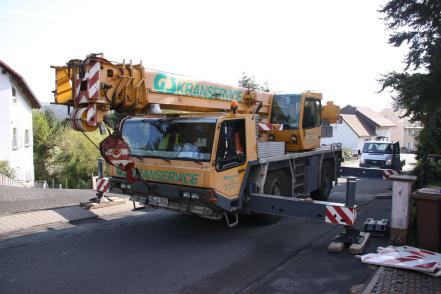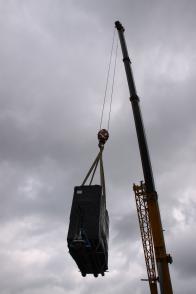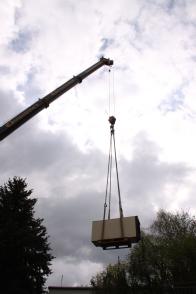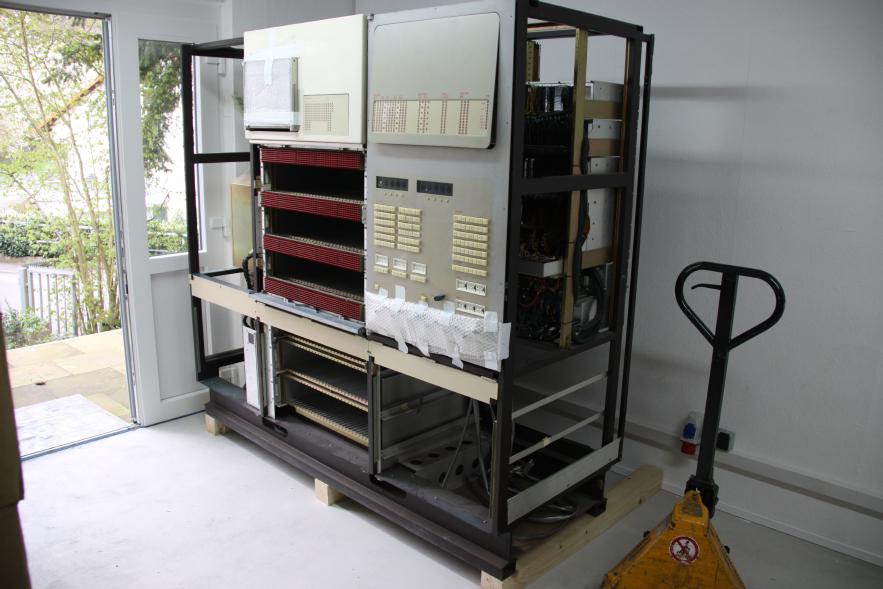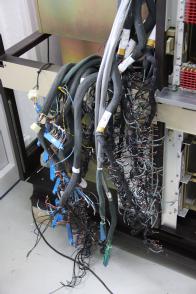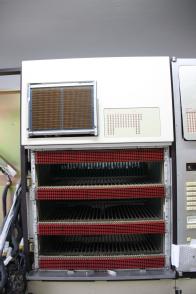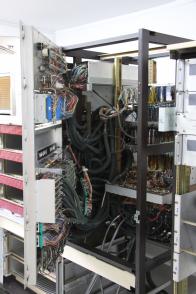The EAI Pacer 700
|

In December 2009 I received a phone call from a university. They had acquired a wonderful (and large) EAI Pacer 700 analog computer in the late 1980s from the DLR (the successor of the "DFVLR", short for "Deutsche Forschungs- und Versuchsanstalt für Luft- und Raumfahrt") which was now looking for a new good home. The DLR bought this highly customized EAI Pacer 700 in 1974 for applications in the field of aerospace technologies. Somehow this machine found its way to a university when its days at the DLR were over. Then in 2009 it was decided that the machine had to go as there was next to nobody left who could operate and program it and the space it occupied was needed for other things. At first the university called some museums but all declined due to the sheer size and weight of the machine (in excess of 2 metric tons). When they called me, I immediately said "YES!". It took some moments for me to fully understand the consequences this would have, as the machine can not be stripped down to smaller parts since its central frame is welded and most cable connection have no plugs and jacks whatsoever. Since there was no time to loose as the machine had to be removed pretty quick, my beloved wife Rikka and I rented a small truck and drove to the university to dismantle the machine shown above in its original condition. Working a full day we removed (and labelled, of course) all circuit boards, the fragile doors, all servo potentiometer etc. and brought them home. Then we hired a professional shipping company to remove the machine from its room in the cellar. As we had neither space to store the machine nor access to any such space with doors high and wide enough, the machine was stored at the shipping company. Initially it was planned to store it there for about 6 months - little did we know that it would take more than four years until we could take care of her again. Our first plan was to build a (not too) small hut on a concrete floor in the garden which we would build literally around the machine. Unfortunately, our request was turned down immediately by the building authority and this is where the trouble started... (One of my favorite stories about this is the comment of the architect "I won't build a bunker for you!" since I demanded no windows at all as all walls would be eventually covered with racks anyway. :-) ) The following years (!) were packed with planning and building a special-purpose annex to our house where the machine would eventually find a new good home. It took one and a half years just to get the OK from the building authority and another couple of months to build the annex with its special concrete floor, a special door, wider and higher than standard-doors, etc. This was completed in mid-2013. Then Rikka and I started working on the interior, covering the walls with plywood, installing three-phase power etc. Then winter came and we had to wait another couple of months before the machine could be brought into the annex. How do you transport a 2 ton machine with a 500 kg hybrid-extension (and an EAI 680 which we acquired in the meantime which was also stored at the shipping company for a couple of years)? With a truck, of course - that is the simple part. But how do you bring such a machine to the annex which is about 1.5 meters above street level and accessible via stairs? You need a rather large truck crane:
|
|
|
The picture on the left shows the Pacer 700 levitating on the crane's hook (fortunately it did not rain that day). It is still in its protective wrapping Rikka and I had applied when we dismantled the machine for its transport from the university to the shipping company's storage location. As it is really difficult to lift the machine with a jack lift, the jack lift was just left in place after removing the machine from the truck. The right hand picture shows the hybrid adapter containing the various AD- and DA-converters, the comparators, etc. necessary to connect the Pacer 700 to a digital computer forming a hybrid computer. (Unfortunately, the digital subsystem has not survived the last decades but I am already thinking about connecting the Pacer 700 via its hybrid adapter to a PDP-11 system in the future.) I can't tell how glad I am that everything went just smoothly and nothing happened to the machine during its flight. :-) (There are some real and - unfortunately - true horror-stories of old computers falling from a crane's hook and being damaged beyond repair, so the whole adventure was a rather hair-rising experience for me. :-) ) |
|
|
This is the first picture of the machine in its new home:
The following pictures show some impressions of the machine after some cleaning but before and restauration work had started. From left to right: Connections to the limiters and the servo potentiometers, the central digital (top) and analog (bottom) patch fields, the backplane wiring of the control section, and the control secion itself.
One might ask how much all of this has cost in the end. Honestly? Several tenthousand EUR all in all, planning and building the annex, storing the machines for years, the complicated transports etc. Was it worth the efforts and expenses? Of course! :-) This seems to be the last surviving Pacer 700 on earth. Over the next couple of months I will restore the machine back to working condition again (updates will appear on this page). |
|
|
01-MAY-2014, ulmann@analogmuseum.org |
|
